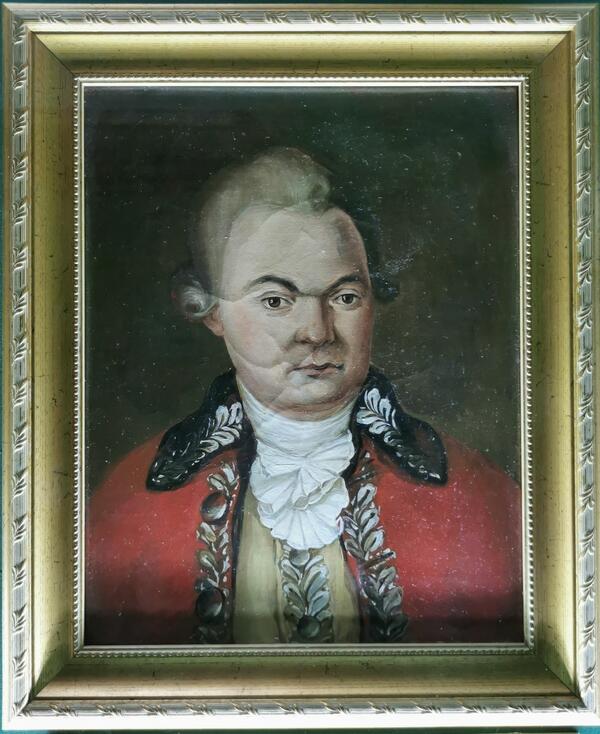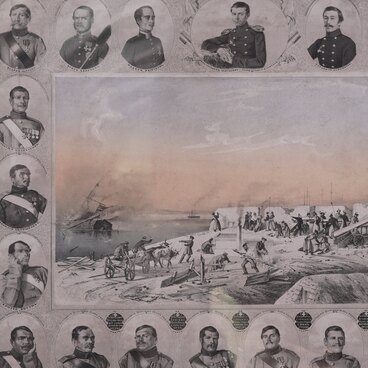Ivan Andreevich Velyashev-Volyntsev came from an old noble family of the Velyashevs. He was enlisted at the age of nine and by the age of 25 was already a captain. Since 1762, Velyashev taught mathematics and artillery science in the Artillery and Engineering Land Gentry Cadet Corps. He became famous as a teacher, philosopher and translator.
In 1767, he compiled the first textbook in Russia, which included a comprehensive course on artillery sciences — “Artillery Rules for the Education of Noble Youth.” It described in detail the materiel (carts, barrels, limbers, carriages, etc.) and ammunition, contained information about gunpowder production, manufacture of molds and casting of gun barrels. It also set out the rules and techniques of shooting. Comprehensive information, easy-to-understand questions and answers and a substantial number of drawings made the textbook quite popular. Ten years later it was reissued and until the 1820s it was used in training of professional artillery officers.
In 1766, Velyashev was promoted to the rank of major, in 1772 — to lieutenant colonel, and in 1774 — to colonel.
Continuing to serve in the cadet corps, in 1779–1781 Ivan Andreevich translated for educational needs the three-volume work of abbot Jean-Antoine Nollet “Lessons of Experimental Physics”, accompanying it with his own notes (“Translated from French and explained with the necessary notes. By Ivan Velyashev-Volyntsev”). In the preface to the publication, he noted that, experiencing difficulties in translating specialized terminology, he received “great assistance from Professor <Stepan Yakovlevich> Rumovsky, who, out of his friendship for me, took the trouble to review the entire translation.”
Velyashev-Volyntsev was interested not only in exact and natural sciences. In 1772, his translation of the “History of the Crusades” by the French historian, philosopher and Enlightenment thinker Voltaire was published. The work was politically timely: it was seen as a sign of support for the position of Catherine II in the “Turkish question”. Thanks to this perception, the book was reprinted twice in 1782 and 1783.
Another work of Voltaire that was translated by Velyashev-Volyntsev was published in 1775. The “New Arrangement of the History of the Human Mind” (the first edition of the “Essay on Universal History, the Manners, and Spirit of Nations”) presented Voltaire’s views on the historical process and the tasks facing the historian. In this work, the philosopher also defined the role of the civilizations of the East for the history of all mankind.
In May 1783, Ivan Andreevich Velyashev-Volyntsev retired with the rank of Engineer Major General.
In 1767, he compiled the first textbook in Russia, which included a comprehensive course on artillery sciences — “Artillery Rules for the Education of Noble Youth.” It described in detail the materiel (carts, barrels, limbers, carriages, etc.) and ammunition, contained information about gunpowder production, manufacture of molds and casting of gun barrels. It also set out the rules and techniques of shooting. Comprehensive information, easy-to-understand questions and answers and a substantial number of drawings made the textbook quite popular. Ten years later it was reissued and until the 1820s it was used in training of professional artillery officers.
In 1766, Velyashev was promoted to the rank of major, in 1772 — to lieutenant colonel, and in 1774 — to colonel.
Continuing to serve in the cadet corps, in 1779–1781 Ivan Andreevich translated for educational needs the three-volume work of abbot Jean-Antoine Nollet “Lessons of Experimental Physics”, accompanying it with his own notes (“Translated from French and explained with the necessary notes. By Ivan Velyashev-Volyntsev”). In the preface to the publication, he noted that, experiencing difficulties in translating specialized terminology, he received “great assistance from Professor <Stepan Yakovlevich> Rumovsky, who, out of his friendship for me, took the trouble to review the entire translation.”
Velyashev-Volyntsev was interested not only in exact and natural sciences. In 1772, his translation of the “History of the Crusades” by the French historian, philosopher and Enlightenment thinker Voltaire was published. The work was politically timely: it was seen as a sign of support for the position of Catherine II in the “Turkish question”. Thanks to this perception, the book was reprinted twice in 1782 and 1783.
Another work of Voltaire that was translated by Velyashev-Volyntsev was published in 1775. The “New Arrangement of the History of the Human Mind” (the first edition of the “Essay on Universal History, the Manners, and Spirit of Nations”) presented Voltaire’s views on the historical process and the tasks facing the historian. In this work, the philosopher also defined the role of the civilizations of the East for the history of all mankind.
In May 1783, Ivan Andreevich Velyashev-Volyntsev retired with the rank of Engineer Major General.



